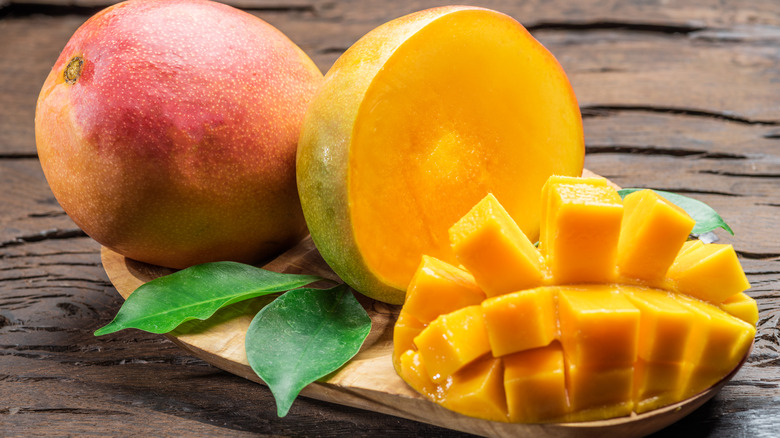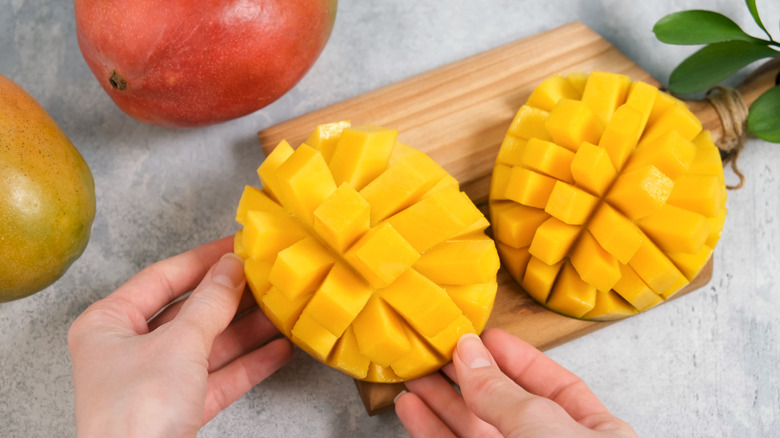The Easy Way To Make Fresh Mango Less Slimy
While the rest of the world has long been in love with mangos, Americans are just learning about this fruit, and with its delicious tropical floral taste and buttery-like texture, U.S. consumers are eating more and more of it each year. The mango is the most consumed fruit in the world, but it was not commercialized in the U.S. until the 1980s. It then took a few decades to gain widespread familiarity (via Fresh Fruit Portal). Its alluring flavor — to eat alone or in various dishes like in Thai food — as well as its highly touted health benefits, have helped dramatically increase its demand. Today we even find its aroma and nutrients expressed in things like summer perfumes and shampoos.
Beyond its popularity, the mango has even become a cultural icon in some parts of the world. In India, for example, where the mango is said to have originated nearly 5,000 years ago, this fruit is a symbol of love, and it is said that the great Buddha would meditate under the shade of a mango tree (according to Mango). While most of the world's supply still comes from Asia, the mangoes found in U.S. supermarkets typically come from Florida, Mexico, and South America.
One small problem: mangoes can often be a rather slimy treat! Although we may naturally assume that this is by nature a characteristic of the mango, there are actually several things we can do to help us to enjoy it in a more desirable state.
Away with the slime
Shamil Velazquez, an executive chef from Puerto Rico (and a connoisseur of mangoes), explained that placing mangoes in the refrigerator prevents its mucilage or slime from forming, as shared by Food & Wine. Storing slices of mangoes in plastic bags or airtight containers in the fridge will help even further. The absence of slime in the fruit makes it easier to handle when used as an ingredient in various recipes. According to Foods Guy, a mango that is soft and pulpy might actually mean it has gone bad, especially if it is oozing or showing any dark spots. By storing slices in a cool temperature like in the fridge, we are, in effect, slowing down the ripening process, thus allowing us more time to eat them while they have a desirable consistency (via Real Simple). The perfect time to eat a mango is when it starts getting a little soft, and is neither firm (underripe) nor mushy (overripe), per Spoon. There are also methods we can use when it comes to picking out the best mangoes at the grocery store, such as smelling the fruit.
Another advantage to using mangoes that aren't slimy is that you can cut them into neat little cubes and include them in salads and desserts. Don't forget to use them in your favorite Thai dishes, as the sweet and spicy contrast is not to be missed.
Slime was great fun when we were kids, but let's do away with it when it comes to mangoes and just toss the fruit in the fridge!

